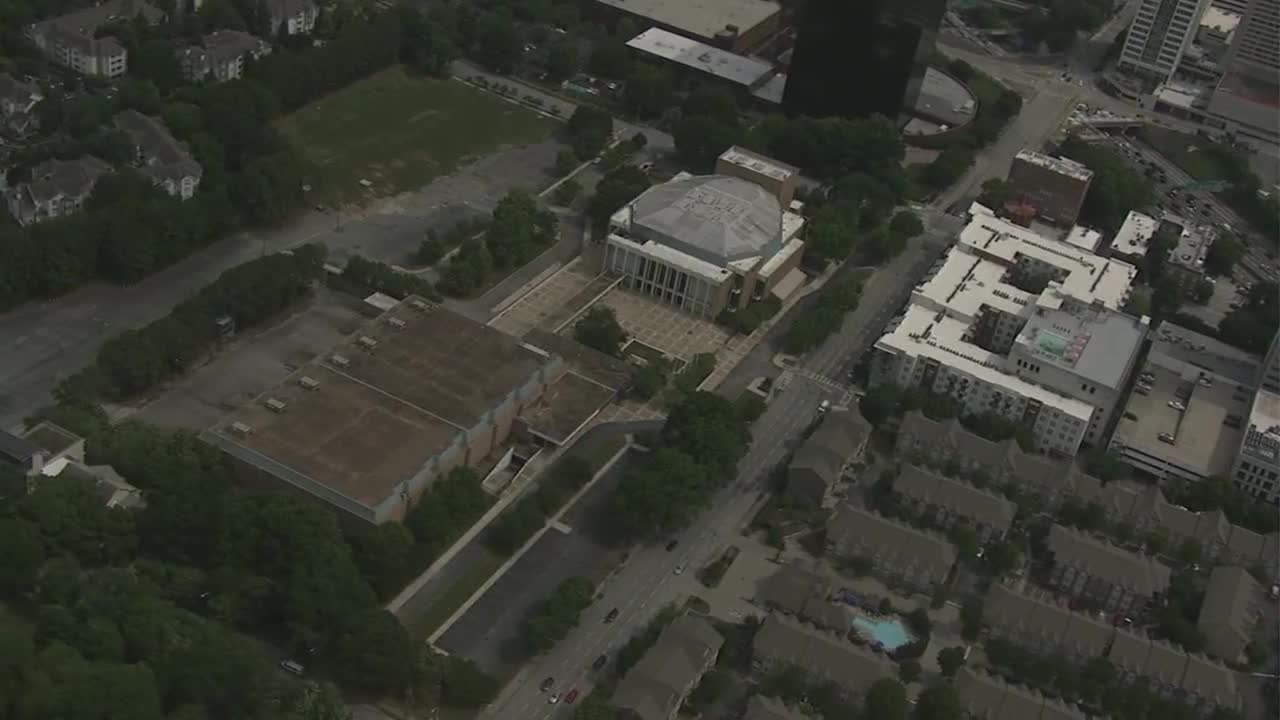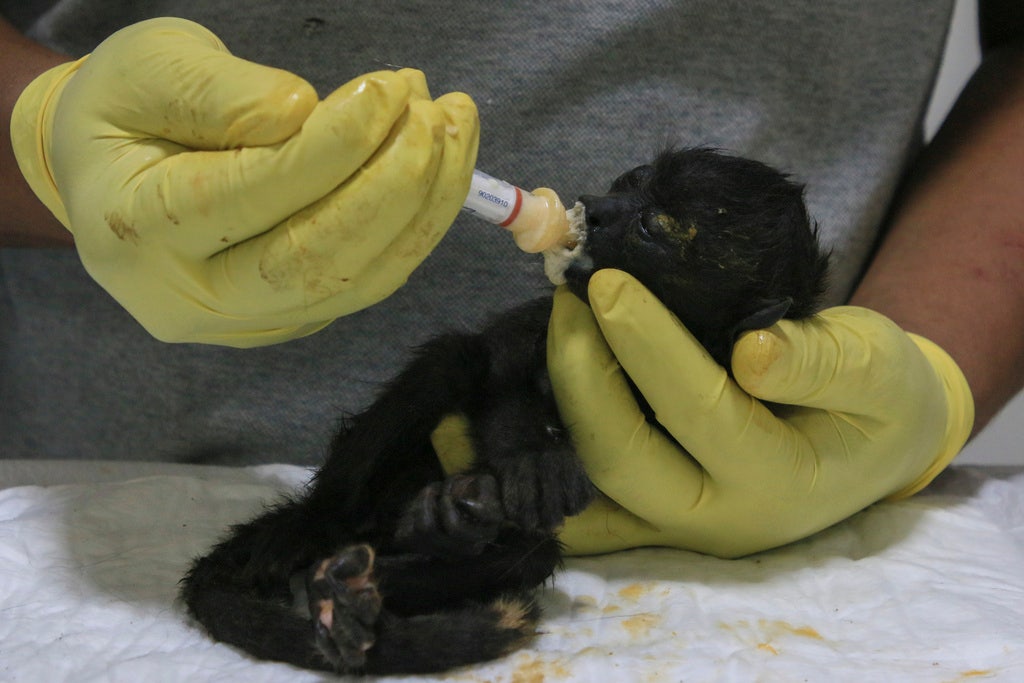Montana
I moved to Montana after getting priced out of California. I work in the trades — not all transplants are rich remote workers buying up property.
- Ian Baylon moved to Montana in April 2022 after watching “Yellowstone” and visiting the state.
- The 34-year-old said you get more bang for your buck renting in Montana than in the Bay Area.
- Baylon said not all Montana transplants are remote workers buying property and driving up prices.
This is an as-told-to essay based on a conversation with 34-year-old Ian Baylon, a tradesman who moved from California to Montana in April 2022. The essay has been edited for length and clarity.
I was born and raised in the Bay Area, San Francisco. Later as an adult I lived in Crockett, which is a beautiful little coastal Bay Area town. Even in Crockett the housing was expensive.
When my girlfriend, now wife, and I moved in together, the cheapest thing we could find for ourselves was in Vallejo, which is super busy, super violent. But that’s what we could afford, even though I was a manager at a granite shop and my wife was working as an esthetician.
During COVID, we got sucked into “Yellowstone,” watched the whole series, and decided to book a trip to Montana in February 2022 just to see how it is.
We stayed in West Yellowstone and had a blast here. One of the days, I decided to look for a job, just to see who was hiring and what they were willing to pay. I googled a couple of granite spots and a company was hiring in Bozeman. I went in for an interview. They asked me, “What will it take for you to move up here?”
They were willing to pay me my $89,000 a year salary plus moving costs, plus a deposit on the place we rented.
From March to April, within a month, I got the job, we rented the house, and we packed up and moved here.
Jacob Boomsma/Getty Images
The culture shock has mostly been good
Moving up here was a little bit of a culture shock, but more in a good way.
People are a lot nicer up here. I’m Mexican American, my wife is white, and no one says anything racist or out of pocket to us. I was super worried about that. A gentleman the other day opened the door for me at the gas station. He was wearing a MAGA hat.
Montana is not what people think. There’s a huge diversity. I equate Bozeman to Berkeley.
I tell people I’m from California and they say “boo” at first, but it’s more of a tit-for-tat. They make fun of me, I make fun of them, and we still get along.
One not good culture shock has been the younger generation. It’s a college town, and they’re not as friendly as my generation is or the generation before me.
Here in the Gallatin Valley where we live now, which includes Bozeman, the housing market is ridiculous. There’s a huge shortage of housing and everything is really expensive.
We thought we were going to be able to come in here and buy property. Or buy a ranch with some land and have animals. Nope. There’s a reason why they call it Boz Angeles. But renting you do get more bang for your buck up here.
Here in Montana there’s a huge shortage of labor too.
While it was very competitive in California, there’s a lot of demand for the trades up here, but nobody up here really wants to learn the trades. The young kids coming into the trades don’t know jack diddly and they expect everything to be handed to them and not work hard.
Gordon Calhoun/Getty Images
Not all Montana transplants are the same
One thing that native Montanans don’t like is that a lot of people that live here in the Gallatin Valley are from out of state, not only from California, but from Washington, New York, Texas, you name any state, they’re here.
I’ve seen both types of transplants. The ones that got out of California because they couldn’t afford it, and the ones that have that expendable money.
That’s where the problem lies. The people that move in and buy up the properties, drive up the cost for the locals, and who don’t really need to work or contribute to the economy here. A lot work in tech or finance, and there’s no need for them to work locally. They can work from home remotely.
But a lot of people moving up here from California are not your techies or your white collar people. It’s people like me, who work in the trades.
We’re just regular people, just like you guys. We got priced out of our own native place.
You do have your trust fund babies from back east and your techies from the West Coast, but the bulk of us are escaping that chokehold. Just to still chase the American dream.
I think we are more happy here than we would’ve been in California, even though we miss it. We do miss our friends, the diversity, and everything that California has to offer.
But living there 24/7 kind of overwhelmed us. The lifestyle was always hurry up and go. Here we work, but there’s so much natural beauty around you. We’re in the valley surrounded by mountains.
On my way home after an 11-hour day, looking at the beautiful mountains and the meadows and the streams and the rivers and the snow-capped Bridgers, how can you be angry? It’s just so soothing.

Montana
Q2 Billings Area Weather: Increasing clouds Wednesday ahead of next storm

BILLINGS — Montana and Wyoming continue to get lingering rain showers, thunderstorms and mountain snow from our current storm system, but it’s on its way out of the region. We can expect decreasing showers and clouds tonight through early Wednesday, with a quieter start to the day. Lows will be cooler than average with freezing temperatures returning to the higher elevations.
We can expect increasing clouds through the day Wednesday as the second storm moves toward our area. Although isolated showers are possible through Wednesday afternoon, most of the rain, snow, thunderstorms and wind with this incoming storm will arrive late Wednesday, Thursday and early Friday. Winter Storm Warnings will be in effect for our mountains, with 8-16 inches of snow possible.
We’ll have another brief break from our active weather pattern late Friday and early Saturday, but the third in this series of storms will push overhead late Saturday, Sunday and will linger in the east early Monday morning. Many of us will have a brighter and warmer Memorial Day, but rain, gusty wind and mountain snow will be very likely much of the holiday weekend. Please travel safely, everyone.
Montana
Statewide Black Bear Study Expands to Northwest Montana – Flathead Beacon
In 2011, bear biologists in Montana published the findings of a first-of-its-kind research project to estimate the state’s black bear population and determine the effects hunting was having on the species. The decade-long study by Montana Fish, Wildlife and Parks (FWP) researchers Rick Mace and Tonya Chilton-Randandt began in 2001 with live captures and cutting-edge DNA-based sampling in the Swan Valley, but it eventually expanded to encompass 11 areas spanning 8,000 square miles across central and western Montana.
At the time, the project helped quell unrest over the state’s black bear management plan.
In the early 1990s, controversy over the recreational harvest of black bears by the public had peaked. Public harvest of grizzly bears in Montana had recently been halted by a federal court that determined the state of Montana did not have adequate data to indicate that the recreational harvest was not impacting grizzly populations, and public stakeholders argued the same was true for black bears. At the same time, the agency recognized that black bear harvest was (and is) an important part of the lives of many Montanans. As a result of this controversy, FWP initiated a public scoping and Environmental Impact Assessment process to update the black bear management program.
By extrapolating regional bear density data from nearly a dozen geographic zones across the state, the study arrived at a mean population estimate of 13,307 black bears and found that, on average, 1,030 black bears were harvested in Montana annually between 1987 and 2006. Nearly half of those bears (46%) were harvested in FWP’s Region 1 encompassing northwest Montana.
Introduced when Montana’s annual black bear harvest averaged fourth in the nation behind Washington, Oregon, and Idaho, the project produced some landmark findings and was cheered for its use of advanced technology.
“This project is an outstanding example of how technology and scientific rigor can be used to inform wildlife management and conservation programs, such that decisions regarding the conservation of wildlife are adequately informed and reliable,” Jim Williams, who at the time worked as FWP’s Region 1 wildlife program manager, wrote in the report’s executive summary, “Black Bear Harvest Research and Management in Montana.”
“The results of this project are already being applied to black bear management and conservation in Montana, and this report will help to form the basis of the black bear management program in Montana for years to come,” according to Williams.
But it was never meant to be the final word. In the 13 years since FWP published the report, and in the 23 years since the agency launched the project, scientific technology and methodology has evolved. With those new methods in mind, biologists have launched a new initiative to model an even more detailed population estimate of black bears in Montana, using harvest data, monitoring and genetic sampling to assess how bears are using the habitat, and whether their behaviors have changed as a result of hunting.
“As you might imagine, scientific methods have come a long way in 10 years, so we’re revisiting a familiar question using different methodologies,” Colby Anton, FWP’s black bear monitoring biologist, said Monday after the agency announced the second season of its black bear monitoring program. “Our overall objectives are to estimate the density and abundance of black bears at a statewide level, but also at a local level, in the individual bear management units. The impetus for this study is really to just better understand how harvest management and Montana’s harvest of black bears impacts black bear populations. It will ultimately help FWP gain an accurate and timely understanding of the black bear populations, accounting for regional differences, to better inform management decisions.”
The biggest difference setting this season’s field work apart from last year’s is its focus on northwest Montana’s Region 1 as opposed to the program’s inaugural season, which saw data collection and bear tracking primarily in Region 2, around the Blackfoot, Clearwater, Missoula, and Bitterroot valleys. Beginning next month, FWP staff will collect hair samples by setting up barbed-wire hair corrals west of Kalispell. In addition, about 20 bears will be captured and collared to collect the GPS data on in western and central Montana.
“We have 90 sites that we hope to establish this year, which are entirely centered in [Hunting District] 103,” Anton said, describing the study’s focus area as beginning near Ashley Lake and stretching west to the eastern edge of the Fisher River Valley and north to the district’s northern boundary.
The barbed-wire hair corral sites will be baited with a scent lure concocted out of fermented blood and fish guts, Anton said, and will see heightened use by black bears and grizzly bears alike. Hair corral sites will be surrounded by bright orange warning signs to prevent safety issues and all sites will be removed before the fall archery season begins. Trapping locations for GPS collaring will be marked by closure signs and members of the public are required to stay out of these areas due to increased safety risks.
“We’ll put up bright orange signs at the corrals that are posted with my name and contact information on them, and we do advise that members of the public not enter these,” Anton said, adding that researchers won’t place the lures until after spring black bear season is over.
The study will provide estimates on bear abundance and distribution and provide insights on how they use available habitats. Biologists will also better assess how hunter harvest and habitat quality and availability are impacting black bear populations. Managers will be able to make more informed season adjustments and recommendations based on monitoring results. The study will also provide insights on survival rates and causes of mortality.
While genetic sampling will occur in northwest Montana, GPS collaring efforts will be replicated not only in northwest Montana but several other areas around the state including the Ninemile Creek drainage and O’Brien Creek near Missoula; the Pioneer, Boulder and Gravely mountains in southwest Montana; the Little Belt Mountains and Rocky Mountain Front; and the Beartooth Front and Boulder River in south-central Montana.
Last season, biologists captured and collared 31 black bears in FWP Regions 1, 2, 3, and 4. Of those bears, 19 are still online, while others have died or shed their collars.
“This year, we hope to collar another 30 bears,” Anton said.
For more information on FWP’s bear research and for tips on bear safety, go to fwp.mt.gov/conservation/wildlife-management/bear.
[email protected]
Montana
Whiskey is for drinking, water for fighting

In the West, “whiskey is for drinking, water for fighting.” The fight over the water that flows in and out of Flathead Lake is just beginning. These waters deserve fighting for and over.
The Flathead watershed includes all the land that drains into Flathead Lake and the Flathead River — a vast area stretching west from the Continental Divide, east to the Salish Mountains, north into Canada, and south to the Clark Fork River to the south.
Waters from the headwaters in Glacier National Park, the “Bob,” and other wild lands flow together, nourishing our communities, forests, and farms and providing endless recreational opportunities. Flathead, Stillwater, Whitefish and Swan rivers contribute to creating the largest natural freshwater lake west of the Great Lakes. This watershed drains 6 million acres of some of the most scenic landscapes imaginable.
The various valleys of the Flathead watershed were scoured by recurring glaciers, leaving a trail of alluvial and outwash deposits and glacial till. The glaciers formed many lakes, wetlands, floodplains, and wonderful Glacier National Park. The glaciers are almost gone as yearly snowpacks continue their downward spiral.
A healthy and viable Flathead watershed relies upon a feasible and healthy snowpack. The 2022-23 snowpack was neither. The 2023-24 snowpack is well below average as yearly precipitation continues to fall as rain rather than snow.
Besides lower water levels throughout the Flathead watershed, wildfire conflagration increasingly threatens the basin and northwest Montana. While not an exceptionally old man at 72, I remember the summers of my youth as relatively smoke-free and pleasant. Growing up in Whitefish, I cannot recall one house having air conditioning. Spring high school sports were played in cool, rainy weather. Baseball games throughout the spring and early summer were often played in the rain, with low, grey cover.
These cool springs and summers resulted in a viable snowpack that gradually released moisture through the summer into the watershed. Our streams, rivers, wetlands and lakes were healthy
The Montana summers of my old age are increasingly hot and smoky seasons spent indoors. My grandchildren are frequently forced indoors due to poor air quality. While we have plenty of whiskey nowadays, water in our snowpack continues to dwindle.
Rather than recognizing and collectively addressing or fighting this together, good-meaning people are taking sides and positions, often at odds with one another. The value of a full Flathead Lake in the summer is something that all of us want, but it will become more and more challenging to achieve unless meaningful solutions are forthcoming.
As the glaciers dwindle and snowpacks grow smaller each year, with less and less water stored in mountain snows throughout the Flathead watershed, fighting will grow. Rancor is already developing amongst Montanans and our communities. We must not let facts and science become the first casualty of this fight.
Two Montana newspapers, the Missoulian and The Daily Inter Lake, have provided timely and informative articles addressing these crucial issues. I write to encourage continuing this coverage as best they can, with limited staffing issues.
All Montanans need to be in this fight. As the Bible reminds us, fighting the good fight is one of the bravest and noblest of life’s experiences.
Tom Muri lives in Whitefish.
-

 News1 week ago
News1 week agoSkeletal remains found almost 40 years ago identified as woman who disappeared in 1968
-

 World1 week ago
World1 week agoUkraine’s military chief admits ‘difficult situation’ in Kharkiv region
-

 Movie Reviews1 week ago
Movie Reviews1 week agoAavesham Movie Review
-

 World1 week ago
World1 week agoCatalans vote in crucial regional election for the separatist movement
-

 Education1 week ago
Education1 week agoVideo: Protesters Scuffle With Police During Pomona College Commencement
-

 News1 week ago
News1 week agoNevada Cross-Tabs: May 2024 Times/Siena Poll
-

 World1 week ago
World1 week agoEU's divided right wing can disrupt if it finds greater unity: experts
-

 News1 week ago
News1 week agoControlled demolition planned at Baltimore bridge collapse site









/cdn.vox-cdn.com/uploads/chorus_asset/file/25379248/247075_Humane_AI_pin_AKrales_0120.jpg)








